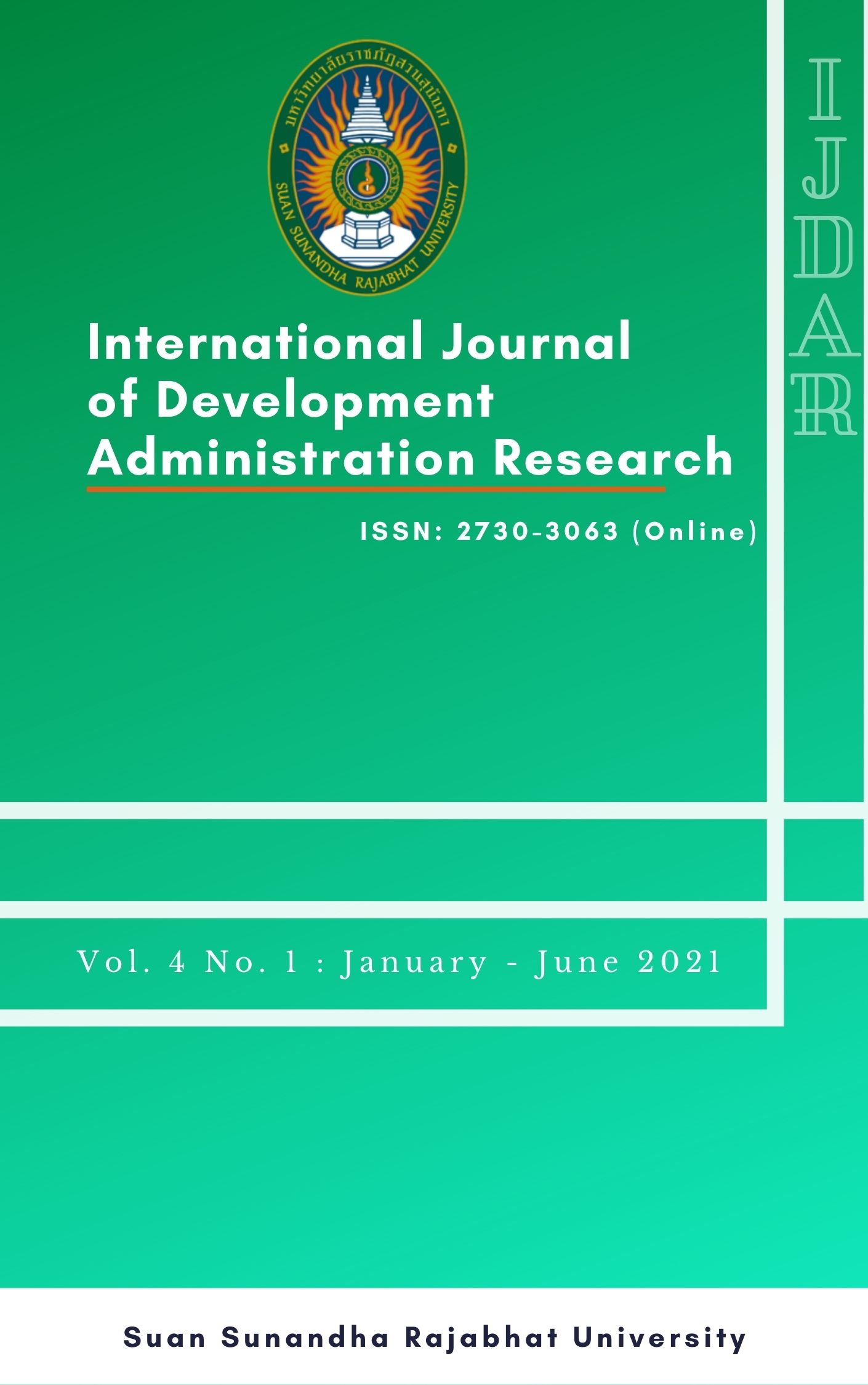Biodiversity Environment to Global Covid-19 Situation
Main Article Content
Abstract
The evolution of living organisms involves variation following the environment that the organism resides and capability in transferring features and struggling to survive. These three factors allow some organisms to adapt better than others, which results in their survival, safety, and reproductive ability. The organisms slow to the adaptation are, therefore, less or extinct. Such adaptation is slow, but over time, the characteristics appear to increase in the next generation, called natural selection. Scientists in modern times have found that the mechanisms that drive to evolve are due to 2 reasons: mutations and the survival of the better.
The classification of biolog ical organisms is an important basis for the preservation, conservation, and improvement of species according to the use of humans in each community by classifying the 5 groups of living
things on earth, the Kingdom Monera is the kingdom of prokaryotes, single-celled, non-nuclei, which are several types of bacteria containing 6,000 species members. The Kingdom of Protista (Kingdom Protista) is the kingdom of single-celled Eukaryote containing about 60,000 members, the cell is developed to have a nucleus encircling the chromosome and to create organs that perform specific functions.The Kingdom Plantae contains 250,000 species, which are organisms like Autotrophs which use green chlorophyll in turning carbon dioxide into food and release the oxygen. Kingdom Fungi has about 70,000 members. They are plant-like but they are Heterotrophic that consumes organic substances that other organisms create. Thus we can see that mushrooms tend to grow in the remains of trees while mold and yeast tend to grow on the food. The Kingdom
Animalia contains about 1,000,000 species, classified as an autotrophic species which consume as a food chain system in layers
Article Details
References
Oangkarn Vanichachewa (2013). The Effects of Global warming on Biodiversity. Journal of Science and Technology, 474-785.
Thawatchai Phengpinich, and Thirasak Lamom. (2015). Development of Environmental Management Model and Biodiversity Value under the Concept of a Prototype Farmer of the Northeastern Village Philosopher network. Journal of Research, SDU, 117-127.
Thawatchai Pengpinich, Chavalit Sawadphol, Akaradej Senanikon, Porntawee Pon Wiangphon, and Pimchanok Watthong. (2015). Indicators for Creating Biodiversity for Ecological Agriculture and Sustainable Use under the Concept of Exquisite Farming of the Network of Agricultural Philosopher Villagers in the Northeast. The Golden Teak: Journal of Humanities and Social Sciences, 10-19.
Nawaphon Srikaewthum, Nongnaphat Thiangkamol, and Chatchai Thiangkamol (2014).Development of the Biodiversity Conservation Model.Journal of Industrial Education, 142-148.
Ratree Sitthiphong and Chalee Trakul. (2017). The Study of Biodiversity and Local Wisdom and Culture of the Community of Na Bo Kham Sub-district, Mueang District, Kamphaeng Phet Province to Promote Tourism.
Journal of Humanities and Social Sciences, 71-82.
Srinat Sai Chomphu, and Boonkiat Sai Chomphu. (2015).Ecotourism based on Biodiversity and Local Wisdom for Economic Development in Bang Krachao area, Phra Pradaeng District, Samut Prakan Province. Academic Journal, Phranakhon Rajabhat University, 9-19.
https://www.who.int/emergencies/diseases/novel-coronavirus-2019/advice-for-public
Retrieved on 14 April 2020


